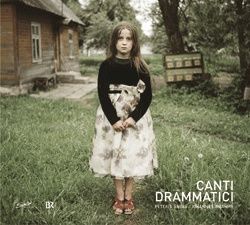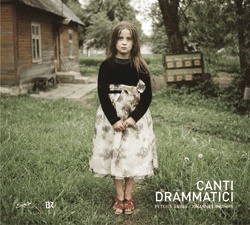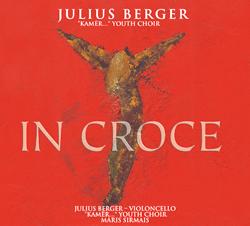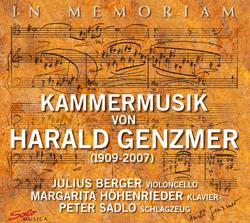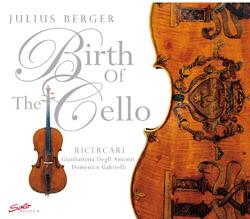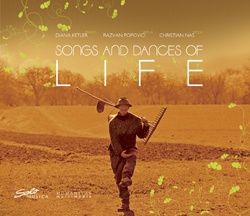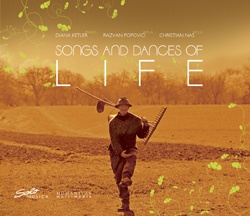Friedemann Eichhorn – Encores & more
Description
This recording was made on the occasion of a 12 part concert series for violin and piano which the artists performed in the Reiss-Engelhorn-Museums in Mannheim in 1997 and 1998.
The idea was to introduce one musical cultural region at each concert. The titles of the programmes were as follow: Vienna, Bohemia and Moravia, France, Italy, Scandinavia, Hungary, Belgium, Russia, Spain, Poland, England and America. The first CD presents the Hungarian concert, the second CD combines selected works from the other programmes.
Tracklist
01 le Canari Konzertpolka – MYRON POLIAKIN
Grand Duo concertnt Searle 128 sur la Romance de M. Lafont “Le Marin” – FRANZ LISZT
02 Lento assai-Animato, quasi Allegro
03 Andantino
04 Variation I
05 Variation II
06 Variation III
07 Variation IV
08 Finale Animato marziale
09 Valse triste – FRANZ VON VECSEY
Rumänische Volkstänze – BELA BARTOK
10 Allegro moderato
11 Allegro
12 Andante
13 Molto moderato
14 Allegro
15 Allegro – Piu allegro
Hejre Kati Scenes de la Csarda No. 4 op. 32 – JENO HUBAY
16 Lento ma non troppo – Allegro moderato
17 Allegro molto
18 Adagio – ZOLTAN KODALY
19 Pizzicato-Walzer – GEORGES BOULANGER
20 Czardas – VITTORIO MONTI
CD 2
01 Hopak – MODEST MUSSORGSKIJ
02 Danse espagnole – MANUEL DE FALLA
03 Daisies – SERGEJ RACHMANINOFF
04 It Ain’t Necessarily So – GEORGE GERSHWIN
05 La Capricieuse op. 17
Suite populaire espangole – MANUEL DE FALLA
06 El pano moruno
07 Nana
08 Cancion
09 Polo
10 Asturiana
11 Jota
12 Kleiner Wiener Marsch – FRITZ KREISLER
13 Syncopation – FRITZ KREISLER
14 Playera op. 23 Nr. 1 – PABLO DE SARASATE
15 Kujawiak – HENRI WIENIAWSKI
16 Piece en forme d’Habanera – MAURICE RAVEL
17 Im Stille von Albeniz – RODION SCHTSCHEDRIN
18 Präludium op. 34 Nr. 13 – DIMITRI SCHOSTAKOWITSCH
19 Präludium op. 34 Nr. 17 – DIMITRI SCHOSTAKOWITSCH
20 Allegro – JOSEPH-HECTOR FIOCCO
21 Romanze – ALEKSANDER ZARZYCKI
22 Säbeltanz – ARAM CHATSCHATURJAN
Casal Quartett – Birth of the String Quartet
Artists: Casal Quartett
Title: Birth of the String Quartet
Catalogue No.: SM 126
Release: 23.10.2009
Description
For the first time recorded entirely on Jacobus Steiner instruments Scarlatti, Boccherini, Haydn, Mozart
The Jubilee Year 2009 celebrates Joseph Haydn as the most important representatives of the Viennese classics in addition to Mozart. Among its greatest achievements is undoubtedly the “invention” of the string quartet. While typically each student begins with this fascinating genre by Haydn, illuminates the casal quartet with the project “The sound of the 18th century,” the various ways to the creation of the European String Quartet. In Italy, France and Germany, four-part instrumental in the 1 Half of the 18th Century are more and more important. In the first CD of the quartet casal on this issue comes next to the masters of the early classical GF Telemann most outstanding protagonists of Italian gets a chance to speak: JB. Sammartini and Alessandro Scarlatti are preparing, which eventually flows amazingly modern with Luigi Boccherini’s String Quartet in real. Another early milestone of the genre is the Quartet, K. 170 by W.A. Mozart, recorded here also for this CD. For the goal of the development end of the 18th century is finally Haydn’s String Quartet in G major, Op 76 / 1. For these recordings the quartet casal where supplied with a complete set of unique instruments of the Austrian violin-maker Jacob Stainer from the years around 1650. Their sound was considered until the early 19th century as an absolute Ideal.
 Awarded with the Echo Klassic 2010
Awarded with the Echo Klassic 2010
Tracklist
02 Sinfonia per archi G-Dur – Giovanni Battista Sammartini
03 Streichquartett KV 80 G-Dur „Lodi“ – Wolfgang Amadé Mozart
04 Konzertstück Nr.1 f-moll op.11 – WASSILIJ BRANDT
05 Konzertstück Nr.2 Es-dur op.12 – WASSILIJ BRANDT
06 Streichquartett op. 2/1 in c-moll – Luigi Boccherini
07 Streichquartett op. 9/4 d-moll – Joseph Haydn
Sergey Dogadin – Dogadin
Artists: Sergey Dogadin
Title: Werke von Tschaikowsky, Prokofiev, Rachmaninoff, Rosenblatt
Catalogue No.: SM 131
Release: 25.09.2009
Description
As with Tschaikowsky’s Mélodie, Sergej Rachmaninow’s Vocalise op. 34 Nr. 14 is also a type of instrumental song. However, in contrast to Tschaikowsky, Rachmaninow actually did compose it to be sung. David Oistrach, who the Violin Sonata Nr. 1 f-minor is dedicated to, is enthusiastic about it. Sergej Prokofjew played it to him the first time in the summer of 1946. The Russian composer and pianist Alexander Rosenblatt (*1956) finds his inspiration in romantic themes and melodies and then distorts the original sound material with the musical means of the 20th century, jazz sounds and unusual rhythms. The originally performed opera Carmen by Georges Bizet in 1875 was the inspiration for the Carmen Phantasy written in 1994 for the clarinettist Anton Dressler. There is a version for clarinet, one for flute and alto-saxophone – with piano accompaniment in both cases – as well as a version for two pianos. In 2002 a version for violin and piano was created, allowing the performer to prove all his virtuous mastery.
Tracklist
02 Valse-Scherzo op. 34 – PETER ILJITSCH TSCHAIKOWSKI
03 Mélodie op. 42 „Souvenir d‘un lieu cher“ – PETER ILJITSCH TSCHAIKOWSKI
04 Vocalise op. 34 Nr. 14 – SERGEI RACHMANINOW
Sonata for Violin and Piano No. 1, f-minor op. 80 – SERGEJ PROKOFJEW
05 Andante assai
06 Allegro brusco
07 Andante
08 Allegrissimo – Andante assai, come prima
09 Carmen Fantasy – ALEXANDER ROSENBLATT
Münchner Hofkantorei – Motetten von Felix Mendelssohn Bartholdy
Artists: Münchner Hofkantorei
Title: Motetten von Felix Mendelssohn Bartholdy
Catalogue No.: SM 128
Release: 18.09.2009
Description
That places the ensemble in the direct historical tradition of the original Münchner Hofkantorei, the Munich court chapel of Duke Wilhelm IV, a member of the house of Wittelsbach. Then as now, the singers from various nationalities are selected according to the choral and solo demands of the music being performed. Today’s Münchner Hofkantorei is a modern vocal ensemble which performs a cappella or together with accompanying instruments, according to the demands of each work. Its proximity to the Bavarian Staatsoper means that the Münchner Hofkantorei regularly takes part in its events, adding ambitious choral literature to its repertoire. In addition to seldom heard works of the Renaissance, its programmes embrace choral compositions of the Baroque, Romantic and modern periods.
Sacred music was increasingly drawn into the wake of Romantic music aesthetics at the beginning of the nineteenth century. Due to its lack of concrete meaning, music seemed no longer subordinate to language; on the contrary, being the art most suited to producing an “intimation of endlessness”, of namelessness, music was acquiring the aura of religion. Felix Mendelssohn-Bartholdy grew up in that period of upheaval. Mendelssohn did not imitate style for its own sake. He proved his craftsmanship and historical flair as master of the most varied compositional techniques and traditions. Above all, however, he succeeded in setting the traditional techniques of motet style within frameworks or in placing accents which accorded with the harmony and syntactic musical language of his time.
Tracklist
02 Warum toben die Heiden (Psalm 2, op. 78,1)
03 Richte mich Gott (Psalm 43, op. 78,2)
04 Mein Gott, warum hast du mich verlassen (Psalm 22, op 78,3)
05 Aus tiefer Not schrei ich zu Dir (op. 23,1)
06 Ave Maria (op. 23,2)
07 Mitten wir im Leben sind (op. 23,3)
08 Beati mortui (op. 115,1)
09 Periti autem (op. 115,2)
10 Beati mortui (op. 115,1)
11 ADspice Domine (op. 121)
12 Denn er hat seinen Engeln befohlen (Psalm 91)
Giuliano Sommerhalder – Neue Philharmonie Westfalen: Romantic Virtuosity
Title:Romantic Virtuosity
Catalogue No.: SM 125
Release: 20.03.2009
Description
All these works (together with three bravura pieces for the cornet) are now being released on CD. With only one exception, they are all world premiere recordings and prove that beyond laborious transcriptions and musical warhorses in the manner of the Carnival of Venice, interesting and extremely virtuosic Romantic original works for the trumpet do exist.
In 1996 the New Philharmonic Orchestra of Westphalia was founded as a merger of two orchestras in the northern Ruhr area: the Westphalian Symphony Orchestra in Recklinghausen and the Philharmonic Orchestra in Gelsenkirchen. From 1997 until 2007 the Austrian conductor Johannes Wildner was the new orchestra’s music director. Since the beginning of the concert season 2007/2008 Heiko Mathias Förster is music director of the New Philharmonic Orchestra of Westphalia.
Tracklist
01 Allegro con fuoco
02 Andante sostenuto, dolce amoroso
03 Allegro, scherzando
04 Konzertstück Nr.1 f-moll op.11 – WASSILIJ BRANDT
05 Konzertstück Nr.2 Es-dur op.12 – WASSILIJ BRANDT
06 Konzertfantasie es-moll – GUSTAV CORDS
07 Slawische Fantasie – CARL HÖHNE
08 Danse russe op. 32 – OSKAR BÖHME
Konzert e-moll, op.18 – OSKAR BÖHME
09 Allegro moderato
10 Adagio religioso
11 Rondo: Allegro, scherzando
12 La Napolitaine. Tarantelle op. 25 – OSKAR BÖHME
Ensemble Raro – Canti Drammatici
Description
Although the Third Piano Quartet was not published or premiered until 1875, Brahms had begun working on it in 1855/56. Even for Brahms, who spent a lot of time revising works until he arrived at the final form, twenty years to complete a composition was exceptional.
Ensemble Raro was formed in 2004 by four extraordinary young musicians. Ensemble Raro is constantly looking for creative programme forms, in which they aim to establish new cultural, musical and literary connections. Raro is the ensemble in residence at the Chiemgauer Musikfrühling Festival in Traunstein, SoNoRo Festival in Bucharest, Kobe International Music Festival, Pelerinages in Munich and Mozartiade in Augsburg. They are actively involved in performing contemporary chamber music repertoire. They gave a British and German premieres of Peteris Vasks’s Piano Quartet. Their performances of Walter Braunfels’ and George Enescu’s works in Pelerinages series in Munich received a high critical acclaim.
Tracklist
01 I Preludio. Moderato – Vasks, Pēteris
02 II Danze. Allegro – Vasks, Pēteris
03 III Canti drammatici. Andante – Vasks, Pēteris
04 IV Quasi una passacaglia. Allegro – Vasks, Pēteris
05 V Canto principale. Cantabile – Vasks, Pēteris
06 VI Postludio. Adagio – Vasks, Pēteris
Quartett für Violine, Viola, Violoncello und Klavier c-moll, op.60
07 Allegro non troppo – Brahms, Johannes
08 Scherzo. Allegro – Brahms, Johannes
09 Andante – Brahms, Johannes
10 Finale. Allegro commodo – Brahms, Johannes
Julius Berger – Kamēr… Youth Choir: In Croce
Artists: Julius Berger, Kamēr… Youth Choir
Title: In Croce
Catalogue No.: SM 120
Release: 03.03.2008
Description
Alfred DelpThe works of this recording signalizes the way of the Human Cross by Affliction and Light. The sound of terrestrial Sein is increased by the Cross, as Beethoven says. If we accept our Cross or admit this music, life-donating “Morning Air” (Jean Paul) will capture, support and comfort us. This music is a gift of God!
Julius Berger, February 2008
The programme of “In Croce” is not a memento mori. It is not intended as a reminder that life is finite or that death is inseparable from existence because it puts a symbolic limitation on life. Artists have always pondered over ways of “emotionally translating” rather abstract trains of thought and making them comprehensible to their fellow beings.
One of the contemporary composers who have taken up this theme is the Norwegian Knut Nystedt. His Stabat Mater op. 111 is inspired by old church music like Gregorian chant and at the same time gains its force from the dialogue between soloist and mixed choir.
A farewell to the world with a work for solo cello entitled “Abschied” (parting) was vouchsafed to the composer Bertold Hummel, who died on August 9, 2002. Just days before his death, Hummel completed a richly contrasting piece, “which in its brevity is deeply moving by virtue of animated, simple and relieving strength”, as Berthold Hummel’s son Stefan aptly notes. For Julius Berger, who was responsible for the Berlin premiere on September 9, 2002, it means an “inward view into the last thoughts of a human being”.
The fact that the process of establishing one’s artistic identity can be a lifelong pursuit is shown by the works of the Estonian composer Arvo Pärt. The melodic and rhythmic models which gave rise to the music of the spheres in the Nunc Dimittis for mixed choir presented here, though those models also recall the polyphony usual to the Viennese Classical School.
Like the works of many of her colleagues who were born in the USSR in the nineteen-thirties (cf. Arvo Pärt), those of Sofia Gubaidulina cannot be assigned to any particular style or school. Gubaidulina originally thought of entitling her Ten Preludes for solo cello “Ten Etudes”, because they were intended for teaching purposes – concentrating on the emotional approach to the instrument, however, rather than on technique. Vladimir Tonkha, the cellist who premiered the Preludes in Moscow in 1977, persuaded the composer to change the title. They are after all studies in expression rather than technique, as the 5th Prelude shows.
Metaphorically speaking, the reason why Samuel Barber (1910-1981) chose to arrange the second movement of his String Quartet op. 11 of 1936 for string orchestra in the ensuing years and use the same opus number was that he wanted to create an oil painting from the pastel picture. The radiant culmination of the work could only gain in force. The Adagio uses an elegiac theme with a gradually rising motif at its core. Optimism is repeatedly confronted with resignation, but always returns in heightened form. This steady wave motion finally leads to the climax, which is followed by a melancholy epilogue.
Giya Kancheli was born in 1935 in Tiflis. The almost ten-minute cello solo “Having Wept” dedicated to Mstislav Rostropovich traces a psychologically well observed set of emotions; while the true fit of weeping is over, conflicting emotions – as it were as echoes – still well up: rage – sorrow – emptiness.
Few composers have been exposed to such severe reproach from his fellows as John Tavener. “Svyati” for mixed choir and cello, which Tavener composed in 1995, lays emphasis on the moment in the Orthodox Christian liturgy at which a bereaved family takes leave of one of their number with a kiss. The end of this liturgy signifies – as Julius Berger rightly says – “that the doors of the new room, the timeless room of eternity, now open”.
Tracklist
02 “Abschied” für Violoncello Solo – BERTOLD HUMMEL
03 “Nunc” Dimittis für gemischten Chor – ARVO PÄRT
04 Präludium Nr. 5 “Sul Ponticello – Ordinario – Sul Tasto” – SOFIA GUBAIDULINA
05 “Agnus Die” für gemischen Chor nach dem Adagio aus dem Streichquartett h-moll bearbeitet von S. Barber – SAMUEL BARBER
06 “Nach dem Weinen” für Violoncello Solo – GIJA KANTSCHELI
07 “Svyati” für gemischten Chor und Violoncello – JOHN TAVENER
Julius Berger – Margarita Höhenrieder – Peter Sadlo: In Memoriam
Artists: Julius Berger, Margarita Höhenrieder, Peter Sadlo
Title: In Memoriam – Kammermusik von Harald Genzmer – Gedenken an Peter Sadlo
Catalogue No.: SM 114
Release: 04.02.2008
Description
Tracklist
01 Adagissimo – Allegro – Harald Genzmer
02 Prestissimo e sempre leggiero, e poco marcato – Harald Genzmer
03 Adagio – Harald Genzmer
04 Finale. Vivace – Harald Genzmer
Suite in C für Klavier
05 Moderato – Harald Genzmer
06 Allegro – Harald Genzmer
07 Andante – Harald Genzmer
08 Presto – Harald Genzmer
Konzert für Klavier und Schlagzeug
09 Molto lento – Harald Genzmer
10 Adagio – Harald Genzmer
11 Intermezzo. Prestissimo – Harald Genzmer
12 Finale. Lento e rubato – Vivace – Harald Genzmer
Julius Berger – Birth of the Cello
Description
Few months after its birthday in Cremona before exactly 440 years, the cello was already integrated into the royal yard orchestra of the king Karl IV by France. From there on the traces of the cello lose themselves, probably changed it several times the owners and got over several wars, until it is again mentioned 1926 in an expert’s assessment. Many years later, the cello meets for the first time Julius Berger. The cello however gives only 20 years to Berger after the first meeting in the year 2004 a second chance. From then on the Cellist and educationalist explain its life search for „the correct “cello for completed, since he finally succeeded to find an instrument that finds with the sound directly the heart of the listeners. Already in the year 1986 Berger tried to convince its Japan manager at that time of a program with Ricercari’s from Gabrielli, without success. Since this time it studied again and again the music of Gabrielli and Antonii and made themselves his comments in the score. Finally, with the Asiagofestival 2006 he confronted the Ricercari of Gabrielli the Präludien of Sofia Gubaidulina. For it and its listener became this concert a fascinating experience. You will hear this also in on this record in a moving way. We hope the fact that the music of Gabrielli and Antonii experiences it finally after nearly 350 years being entitled value and that it many people the wealth reveals, which she gave also to Julius Berger and us.
Tracklist
02 Ricercata Nr. 2 – Gianbattista Degli Antonii
03 Ricercata Nr. 3 – Gianbattista Degli Antonii
04 Ricercata Nr. 4 – Gianbattista Degli Antonii
05 Ricercata Nr. 5 – Gianbattista Degli Antonii
06 Ricercata Nr. 6 – Gianbattista Degli Antonii
07 Ricercata Nr. 7 – Gianbattista Degli Antonii
08 Ricercata Nr. 8 – Gianbattista Degli Antonii
09 Ricercata Nr. 9 – Gianbattista Degli Antonii
10 Ricercata Nr. 10 – Gianbattista Degli Antonii
11 Ricercata Nr. 11 – Gianbattista Degli Antonii
12 Ricercata Nr. 12 – Gianbattista Degli Antonii
13 Ricercar Nr. 1 – Domenico Gabrielli
14 Ricercar Nr. 1 – Domenico Gabrielli
15 Ricercar Nr. 1 – Domenico Gabrielli
16 Ricercar Nr. 1 – Domenico Gabrielli
17 Ricercar Nr. 1 – Domenico Gabrielli
18 Ricercar Nr. 1 – Domenico Gabrielli
19 Ricercar Nr. 1 – Domenico Gabrielli
Diana Ketler – Ensemble Raro: Songs and Dances of Life
Artists: Diana Ketler, Ensemble Raro
Title: Songs and Dances of Life
Catalogue No.: SM 113
Release: 21.08.2007
Description
The ensemble Raro was created 2004 by four outstanding musicians, whose goal is it to create unusual chamber-musical moments. In order to realize this as consistently as possible, the ensemble prefers the position „Ensemble in Residence “, which has it in Munich, Traunstein, Augsburg, Germany, Bucharest and Kobe, Japan. Diana Ketler, who’s been ask to became in 2001 a professor for piano at the Royal Academy of Music in London, and being a Soloist with considerable Orchestras in nearly all countries in the world, uses themselves passionately for the music of the Baltic countries and works closely together with composers such as Peteris Vasks and Arvo Pärt. Razvan Popovici plays as soloist in several European countries. Its participation as a viola player under Abbado, Harnoncourt, Maazel and Wand coined its career. He created the Ensemble Raro and is Initiator of several important Music Festivals.
After this release a new Co-Produktion with the “Bayerische Rundfunk” with works of Peteris Vasks and Johannes Brahms follows this autumn on the Solo Musica Label.
Tracklist
04 Colo pe din sus de sat für Klavier Solo – Liviu Comes
05 Sarbatoarea recoltei für Klavier Solo – Dumitru Marinescu
06 Sus din varful muntelui für Klavier Solo – Liviu Comes
07 Noapte für Klavier Solo – Anatol Vieru
08-11 44 Duos für zwei Violen SZ 98 (Auswahl 2) – Béla Bartók
12-15 Vier kleine Klavierstücke – Franz Liszt
16 44 Duos für zwei Violen SZ 98 (Auswahl 3) – Béla Bartók
17 Hungarische Melodie D871 für Klavier solo – Franz Schubert
18 Balada si joc für zwei Violinen – György Ligeti
19-21 44 Duos für zwei Violen SZ 98 (Auswahl 4) – Béla Bartók
22-23 Rumänische Volkstänze für Klavier SZ 56 (Auswahl) – Béla Bartók
24-32 44 Duos für zwei Violen SZ 98 (Auswahl 5) – Béla Bartók
33 Märchen aus Loutky für Klavier Solo – Bohuslav Martinu
34-41 44 Duos für zwei Violen SZ 98 (Auswahl 6) – Béla Bartók
42 Madonna von Frydek from Auf dem verwachsenen Pfad für Klavier Solo – Leos Janácek
43-46 44 Duos für zwei Violen SZ 98 (Auswahl 7) – Béla Bartók
47-56 Rumänische Weihnachtslieder(Heft I) für Klavier Solo – Béla Bartók

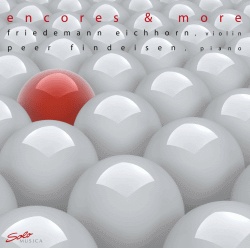


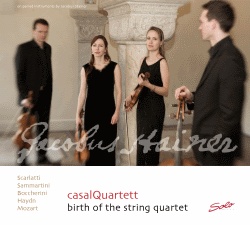

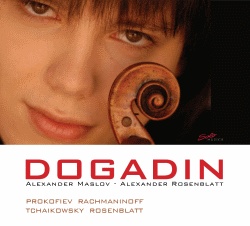

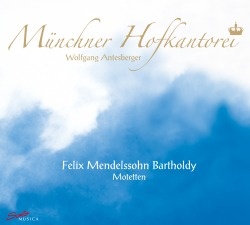

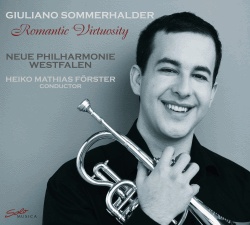 Artists:
Artists: 